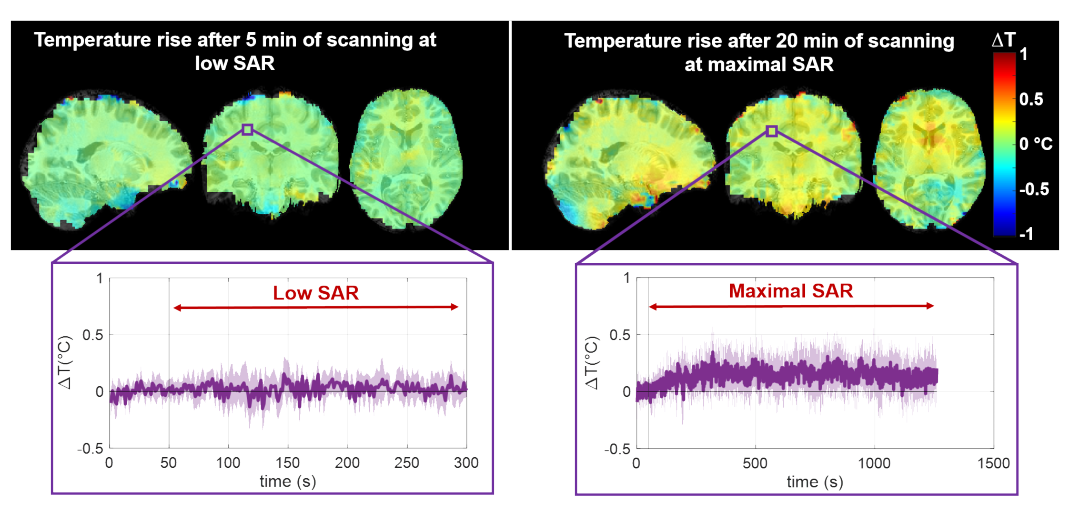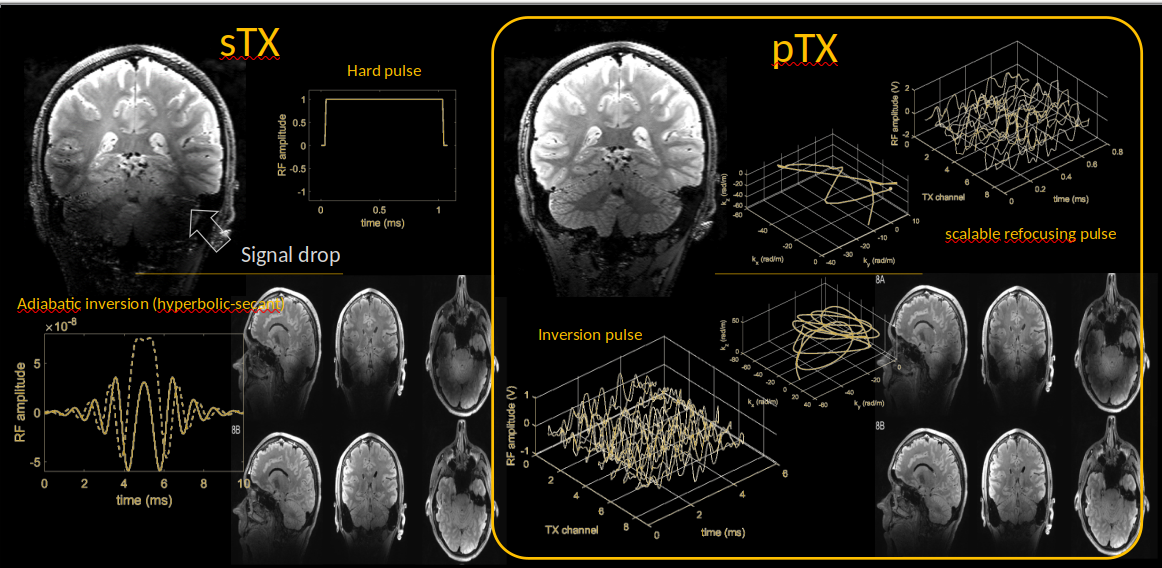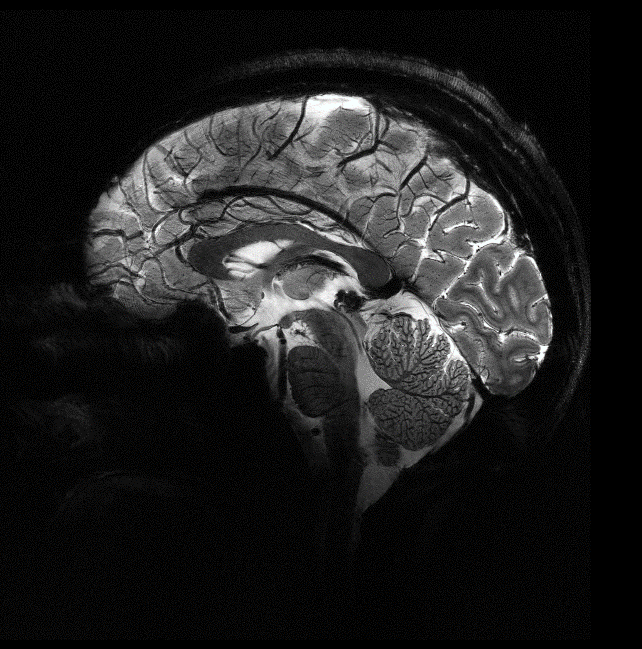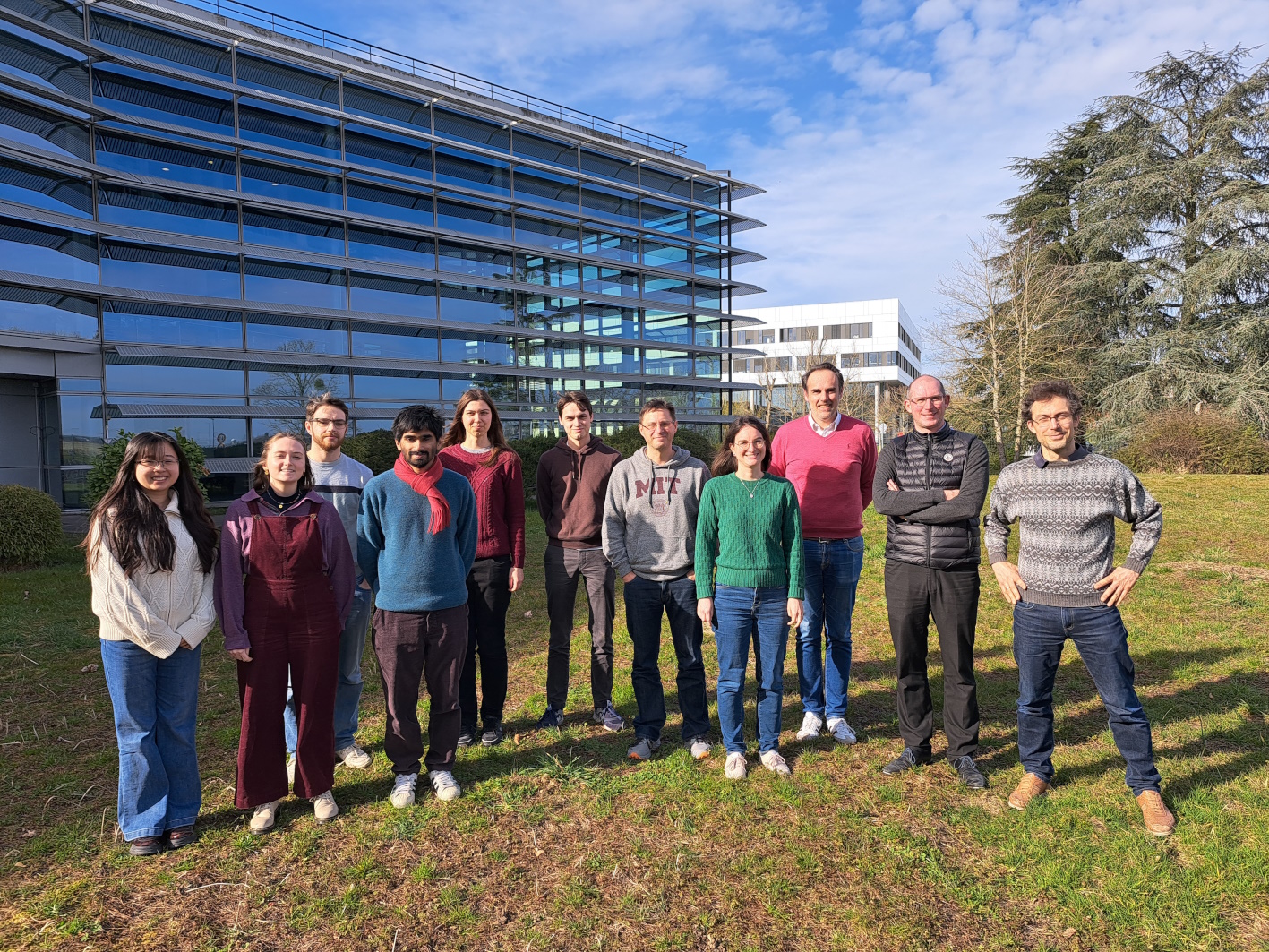
Sparkling
Iterative optimization of the Sparkling sampling for a 2D GRE. The final sampling fulfills Compressed Sensing criteria and is compatible with hardware limits (gradient amplitude and slew rate). Such an acquisition is highly accelerated compared to the fully sampled Cartesian acquisition (courtesy C. Lazarus, CEA BAOBAB & INRIA MIND)

SAR
Measuring non-invasively the temperature rise occurring in cerebral MR exams.

Parallel transmission technology
With 7 Tesla MRI (300 MHz), the image contrast (here we present 3D T2 weighted images with and without suppression of the fluid’s signal) is often impacted by the non-uniformity of the transmitted RF field. With a single transmit architecture (sTX, left image), this problem is difficult to mitigate, even with the use of high power adiabatic RF pulses for spin inversion. The parallel transmission technology (pTX), coupled with a pulse design strategy involving constrained non-convex (numerical) optimizations, can solve this problem while maintaining the RF energy deposition in the body low. The presented pTX pulses make use of parameterization-free RF and magnetic field gradient waveforms obtained by application of a GRAPE (Gradient Ascent Pulse Engineering) algorithm.

In vivo imaging at high resolution at 11.7T
Boulant, N., Mauconduit, F., Gras, V. et al. In vivo imaging of the human brain with the Iseult 11.7-T MRI scanner. Nat Methods 21, 2013–2016 (2024).




